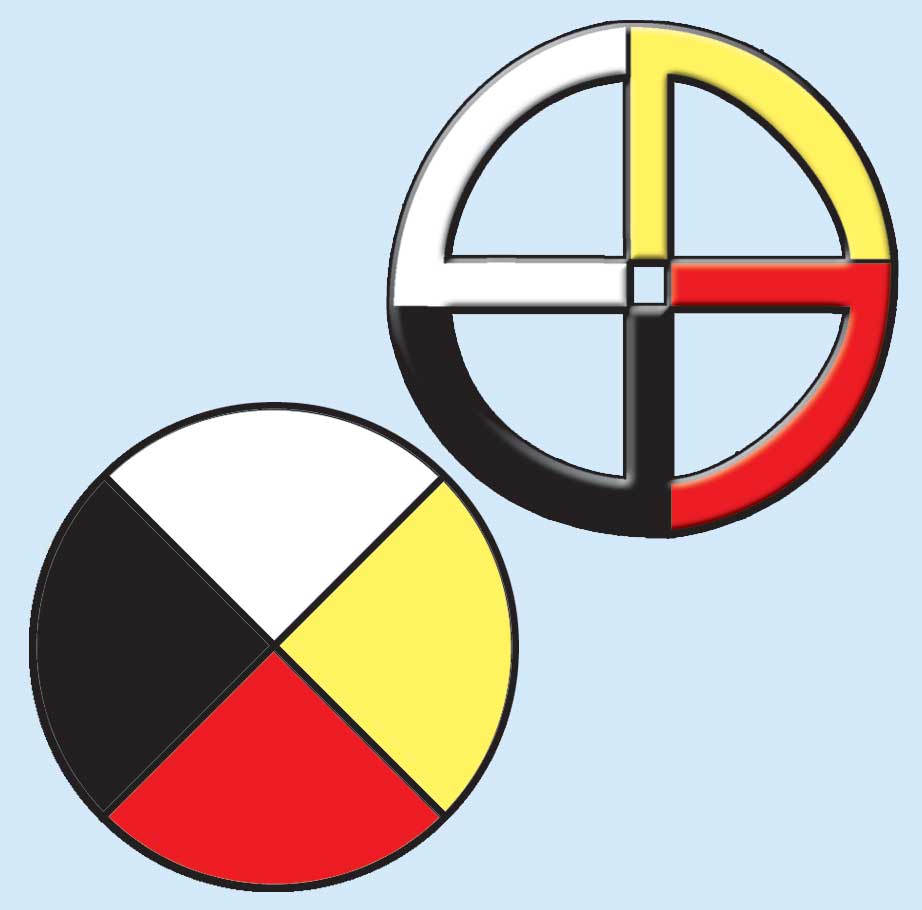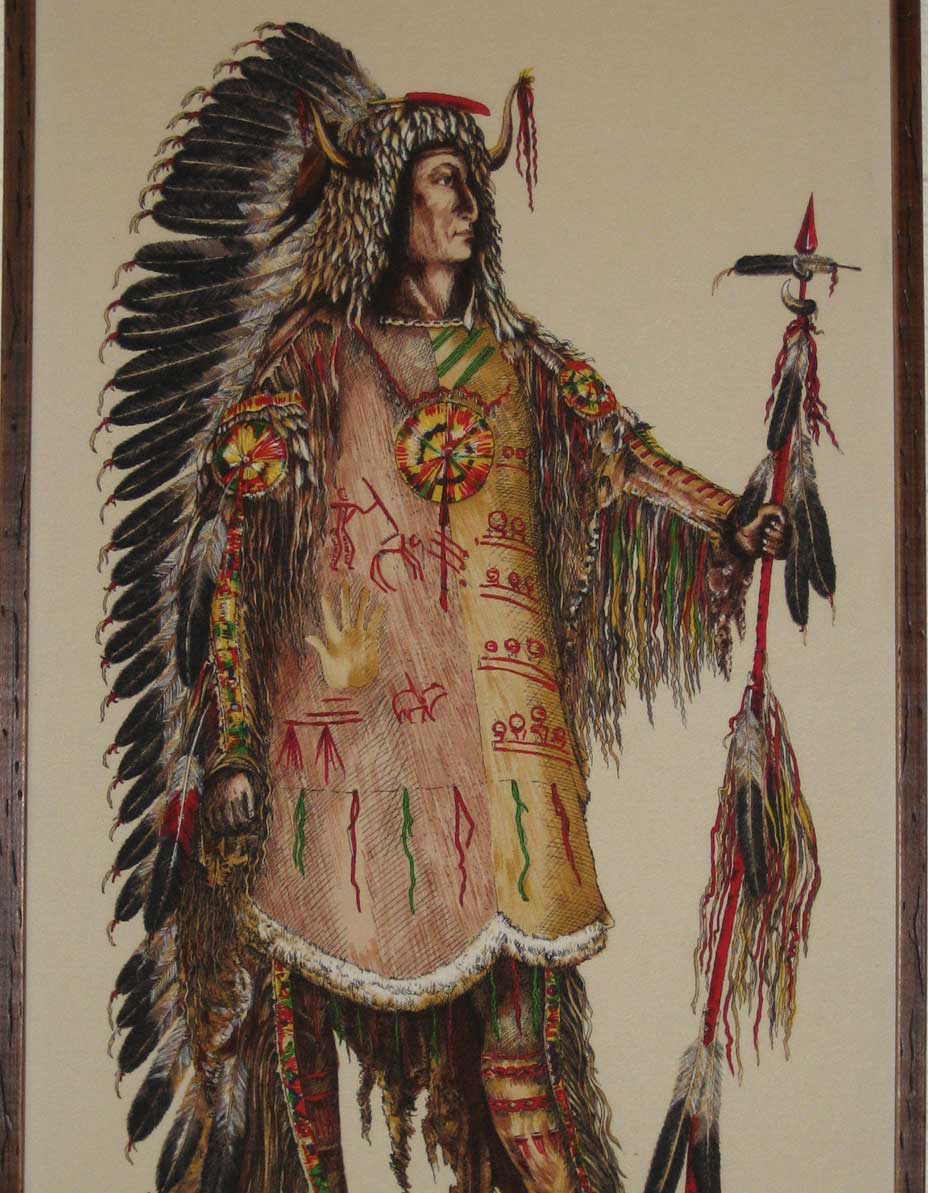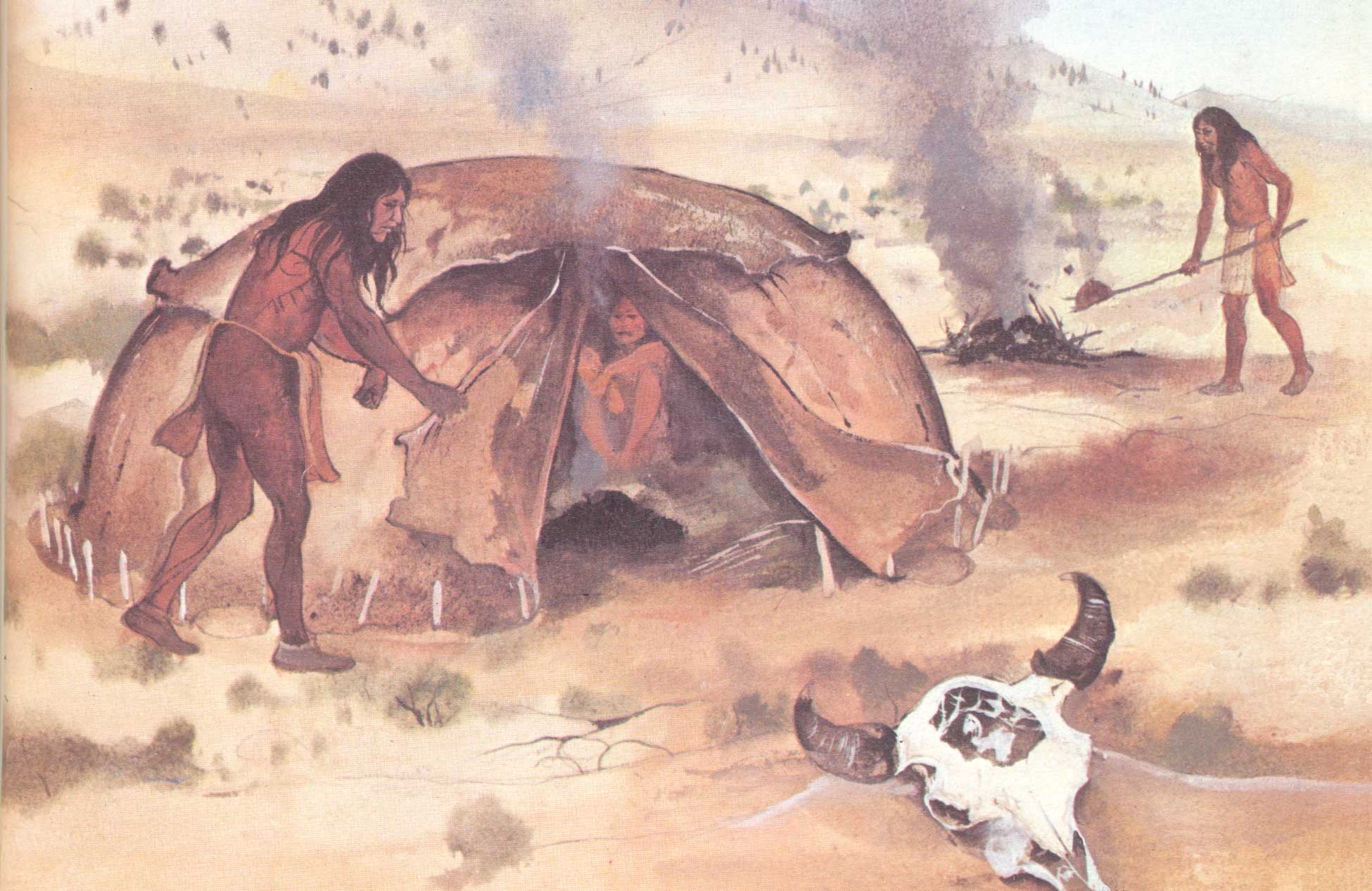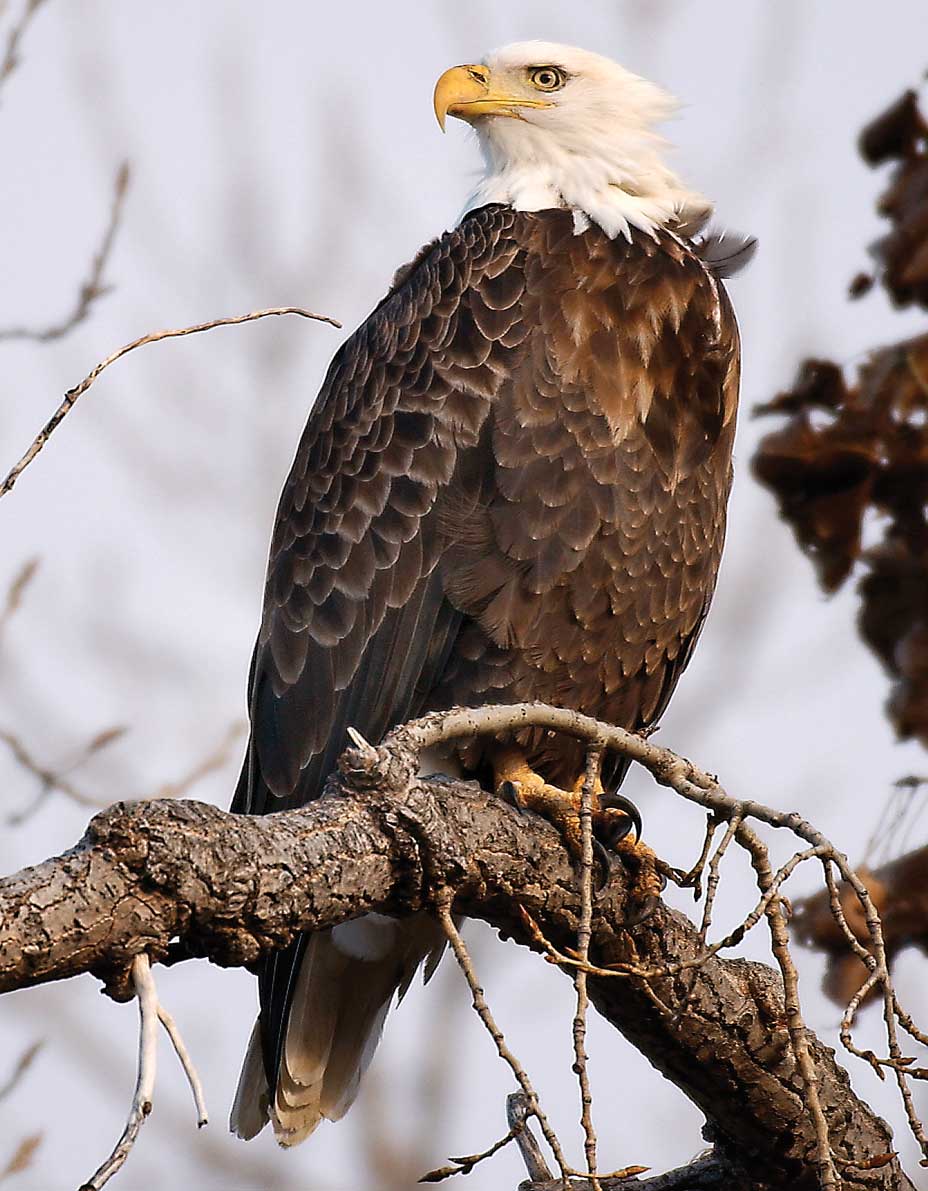The religions of the Plains Indian tribes was not separated from the way they lived, so their religion was really a way of life. They believed in the Great Spirit, and they were deeply spiritual. They believed that all humans, animals, birds, fish, and plants had equal value and needed to be treated with the same respect. Each tribe had its own spiritual ideas.
Because everything needed for life comes from the earth and the sky, many of the Indian people called them “Mother Earth” and “Father Sky.” A circle was the most sacred symbol because it was a symbol of Earth and also the path of the sun around Earth. The Medicine Wheel• Symbol showing the circle of life
• Reminder that all things are connected
• The center of the Wheel represents the person’s will was a powerful symbol of this roundness showing the circle of life.
The Medicine Wheel is a reminder that all things are connected, and there is a peaceful interaction among all living things on Earth. The center of the Wheel is the person’s will, which means that each person has a choice as to how to live his or her life.
Since a circle has no beginning and no end, it is a symbol of how everything is connected. For example, people hunted the animals as food, so the animals were nourishing the humans. When the humans died, their bodies went back to the earth to nourish the grass that fed the animals. The cycle, or circle, was then complete. Indians were not afraid of death because they knew that it was only part of the circle of life.

Figure 68. The Medicine Wheel is a powerful symbol showing the circle of life. It is shown here in two different forms. (SHSND-ND Studies)
The number “four” was special to the Plains Indians because they believed that all things in the natural world came in groups of four. Examples include the four seasons (summer, fall, winter, spring); four directions (north, south, east, west); four cycles of life (child, youth, adult, elder); and four elements of Earth (earth, air, water, fire).
Four values that were significant to the Plains Indians were honesty, generosity, bravery, and respect for elders and children.
The foundation of their culture was honesty. Stealing from another person was something they would not ever have thought of doing. Raiding other tribes to steal horses or other items was acceptable because it was an act of war. That was not considered stealing. If someone lied or did something else wrong, he or she would be shamed or embarrassed by the family, and it would not happen again. If someone broke the rules of the village the tribal council told that person to leave the village.
Generosity was a value that was greatly admired. Helping others and giving away gifts was more important than having personal possessions because people are more important than things. The Give-Away• Ceremony in which possessions are given away in honor of someone
• Shows the importance of generosity ceremony shows the importance of generosity. In this ceremony, horses, robes, blankets, and other possessions were given away in honor of someone. Give-Aways are still held today to honor people at graduations, funerals, powwows, and other important times.
Bravery was an admired trait. In fact, if a warrior struck an enemy with a stick or with his hand, this was considered braver than killing him. This custom of touching an enemy was called counting coupA warrior touching an enemy with a stick or with the hand instead of killing him (koo).

Figure 69. Mandan Chief Four Bears with a coup stick. (Three Affiliated Tribal Museum)
Another greatly admired value was showing respect for elders and children. Elders deserved respect because of their wisdom, and children deserved respect because they were so precious.
Medicine men and medicine women were powerful people in the Plains Indian cultures. Medicine was not only connected with healing but also with religion. Medicine men and medicine women gathered herbs and other ingredients, and they called upon assistance from the spirit world for help in healing the sick.
Certain animals and objects are sacred to the Indians. The bison is a sacred animal to the Lakota and other plains tribes because it gave its life so that the people would survive.
The Lakota people are sometimes called the “Buffalo Nation,” and one of their stories is about White Buffalo Calf Woman.Story about how the Lakota people received the sacred pipe (See the story below.)
The sacred pipe was smoked only at special ceremonies where it was passed around as part of the ceremony. Fire or smoke was used to clean, or purify, the spirit. Smoking was only done as part of a religious ceremony, and it did not become the bad habit that some people have today.
The most important religious event of the Lakota and other Plains Indians was the Sun Dance.• Most important religious event of the Lakota and other Plains Indians
• People took part in this sacred ceremony when they wanted something special This sacred ceremony usually took place at the time of the Summer Solstice (first day of summer) and lasted from four to eight days.
White Buffalo Calf Woman
One summer, long ago, all of the Lakota people got together for a midsummer celebration. Even though the prairie was usually full of buffalo, this time none could be found, and the people began starving. Two warriors were sent out to scout for buffalo, but they couldn’t find any. All at once, they spotted a beautiful woman, dressed in white deerskin, coming toward them. One of the warriors could see that she was a holy person, but the other man did not greet her in a respectful way and was suddenly struck dead by lightning.
The woman told the man who was left that he should go back to the tribe and tell the others that she was bringing instructions for them. He went back and told the people to get ready for the arrival of a holy woman.
When the woman appeared at the camp, she was carrying a sacred pipe. She told the people to look at it, and then she blessed it and gave them directions on how to use it. She said that the sacred pipe brings people together in a circle of love.
The holy woman stayed for four days, giving instructions on how to live. As she was leaving, the people watched her walking away. All of a sudden, she turned into a white buffalo calf. Immediately, large herds of buffalo appeared and allowed themselves to be killed so the people could survive. From that day on, the buffalo gave the people everything they needed in order to live.
Because the bison was so important in the day-to-day lives of the Plains Indians, different parts of the bison were used as symbols in the ceremony. People (mostly men) took part in this ceremony when they wanted something special such as to become a good hunter or a better warrior. Some would pray for a sick relative to be cured.
The sweat lodge ceremony was a common way to cleanse and purify the body, mind, and spirit. A sweat lodge was a frame covered with hides where the people prayed and sang as water was poured over hot rocks to create steam. The sweat lodge ceremony is still practiced by many Indians today.

Figure 70. Sweat Lodges were used as baths, or to purify the body, mind, and spirit. A frame of willow, covered with bison hide, was set up over a fireplace. Red-hot rocks were put in the fireplace, and water was poured over them, making the lodge a hot, dark, steam room. (Christopher Davis)

Figure 71. The American bald eagle is an official symbol of the United States. It is also a sacred and respected symbol for the American Indians. (ND Game and Fish Department)
Medicine bundles were significant items in the lives of the people of many tribes. A medicine bundle• Collection of objects with spiritual value
• Started when a baby was born
• Person would add more objects throughout life
• Buried with the person at death was started when a baby was born. The cord that had connected the baby to the mother was placed into the medicine bundle; and throughout the person’s life, he or she could add more objects to the bundle. These objects might be feathers, claws, or other things that had spiritual significance for the person. Only the owner of the medicine bundle knew what was in it, and it was buried with the owner at death.
Even though the religious beliefs of the Indians were in place hundreds and even thousands of years ago, many values and traditions of the faith are still practiced today. Ceremonies honor the belief that everyone and everything on Earth is connected and should be treated with respect. Sacred items still have their special significance, and it is very important for everyone to be respectful of the customs that are part of any culture.
An eagle feather• Sacred object
• Symbol of the Creator (God)
• Only American Indian tribal members may possess eagle feathers is a sacred object for American Indians. It is a symbol of the Creator (God). Of all the birds, the Creator chose the eagle to be the leader. It flies the highest and sees the farthest of all creatures. Eagle feathers are worn at special ceremonies and must be treated with the greatest respect.
The United States government has passed laws protecting cultural and religious practices. One of these laws states that only American Indian tribal members may possess (own or have) eagle feathers. Anyone else can be arrested and fined or put in jail for having an eagle feather.
At high school and college graduations, American Indians sometimes wear eagle feathers as part of their graduation regalia. A feather may be displayed alongside the tassel on the graduation cap, or a fan of eagle feathers may be carried. Sometimes a full eagle-feather headdress might even be worn. A sacred eagle feather brings honor to the person wearing it, and others around the feather also benefit from its influence. Not all American Indians follow this tradition.
Almost 200 years ago, Christian missionaries brought their religion to American Indians of the Northern Plains. Many American Indians today are Christians.


